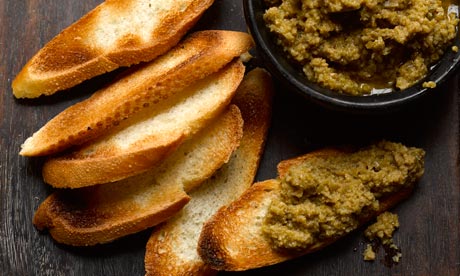Spring Green Vegetables and Soft-Cooked Eggs

For the vegetables:
- 1 vanilla bean, cut open and seeds scraped out
- 2 cups snap peas, or sugar peas
- 16 green asparagus
- 4 leeks, white part only
- 2 tablespoons sherry vinegar
- 6 tablespoons California Olive Ranch extra-virgin olive oil
- 1 tablespoon chopped fresh mint
- Salt
- Crushed red peppercorns
For the whole soft-cooked eggs:
- 4 extra fresh eggs
- 1 tablespoon white wine vinegar
- Salt
Directions
Step 1: Steam the vegetables for 5 minutes and rinse them under cold water; set aside.Step 2: In a bowl, whisk together the vinegar with the oil. Add the vanilla seeds, mint, salt and red peppercorns. Serve on top of the warm vegetables.
Step 3: Boil water in a pot with the white wine vinegar and a pinch of salt. When the water is boiling, drop the eggs carefully in the water. Cook for 5 minutes. Remove from the heat and tap them with a knife, holding each in one hand. Remove the shell carefully. Serve on top of the vegetables and sprinkle with red peppercorns. Serve with crusty bread on the side.
Recipe and photo courtesy of Béatrice Peltre of La Tartine Gourmande.
Follow us on Twitter: MemphisFoodGuy




















